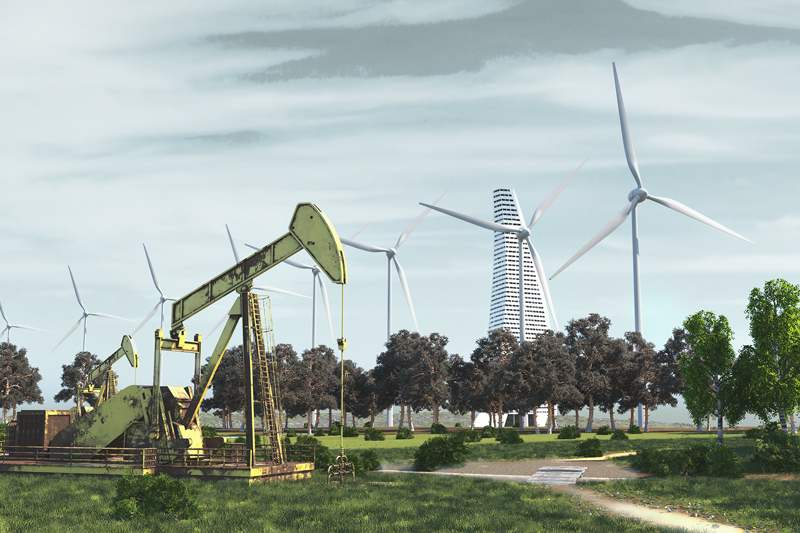Energy industry consolidation continues with a recent surge in North American midstream M&A activity. Approximately $30 billion has been transacted in the U.S. and more than $2 billion in Canada year-to-date. A significant portion of this activity is driven by the strategic focus on expanding integrated gas processing and natural gas liquids (NGL) systems. This expansion positions midstream companies to bolster their processing footprint, capture synergies and enhance their value proposition to customers in a highly competitive market.
What to Do With Permian Stranded Gas?
As negative Waha prices have shown, the Permian has an associated natural gas problem. On one hand, producers are discouraged to flare amidst regulations and investor pressure while on the other hand takeaway capacity to move the excess gas to LNG trains under construction on the Texas Gulf Coast rapidly fills up. However, midstream companies see this as an opportunity to capitalize on Permian gas and NGL processing, turning lemons into lemonade.
Midstream companies are investing heavily in gas processing facilities that enable them to extract and fractionate NGLs, resulting in more lucrative operations compared to handling crude oil volumes alone. A notable example is Enterprise Product Partners’ $950 million acquisition of Piñon Midstream. This deal not only gives Enterprise exposure to the eastern margins of the Delaware Basin—a growth area for several operators—but also includes sour gas treatment facilities that are central to unlocking further development in the region. Similarly, Energy Transfer’s $3.25 billion acquisition of WTG Midstream involved the addition of eight processing plants with a combined capacity of 1.3 Bcf/d, with an additional 400 MMcf/d of processing under construction. These types of accretive acquisitions are likely to continue as midstream companies reach for more ways to bolt gas processing and fractionation capacity on to existing midstream systems to maximize value vs. growing their footprint organically.
Driving Cost and Operational Efficiencies
Synergy capture is another driving force behind many of these M&A deals. By integrating new assets into their existing footprints, companies can realize significant cost savings and operational efficiencies.
ONEOK’s recent acquisitions are a prime example of this strategy. In the largest midstream merger this year, ONEOK acquired Global Infrastructure Partners’ 43% interest in EnLink Midstream for more than $5.5 billion, adding exposure to key growth areas like the Permian, Mid-Continent and Haynesville. EnLink’s Haynesville assets include two gas processing plants with a total capacity of 710 MMcf/d and three NGL fractionation facilities. The integration of these assets into ONEOK’s portfolio allows for more efficient and profitable operations by leveraging EnLink’s NGL value chain to fill 75% of the company’s Haynesville fractionation capacity with its own assets and serving a more diversified customer base, including petrochemical, refining and export.
Recent M&A deal flow also points to ways midstream companies are seeking synergy in crude oil operations. A good example is ONEOK’s $2.1 billion purchase of the Medallion crude and condensate system in the Midland Basin. The company identified $250 million in base-case run-rate synergies across both the EnLink and Medallion deals, with the potential to reach $450 million when including probable and longer-term synergies. This emphasis on synergy capture was reflected in the modest 6.3x EBITDA multiple ONEOK assigned to the Medallion system, after accounting for synergies, compared to an average 8x multiple or higher in other recent midstream M&A deals.
Newly merged midstream operators who can successfully drive synergy can pass on net cost savings to customers, further sharpening competitive edge.
Sustaining Midstream M&A Momentum
Major midstream operators, with healthy balance sheets, are expected to remain active and competitive in acquiring assets that enhance their integrated systems. Defensive M&A, particularly in the Permian, is anticipated as large operators seek to keep volumes within their systems and out of competitors’ hands. Companies that successfully expand and integrate their gas processing and NGL systems will be better positioned to capture value and drive growth in an evolving energy landscape.
As gas pipelines like the Dela Express are built out in the coming years, Permian associated gas will flow to the Texas Gulf Coast where LNG facilities open the doors to global markets. Midstream companies focused on processing are likely to turn their eye toward gathering systems if there is a recovery in natural gas prices in 2025 that boosts the attractiveness of these assets, sustaining the merger momentum in M&A activity into the next year.
Want more insights into North American basin trends, M&A activity and price moves? Check out Enverus Intelligence® Oil and Gas Research | Enverus
Find more great content on the gathering and processing, pipeline transport, LNG and downstream sectors in the latest issue of Midstream Pulse .







